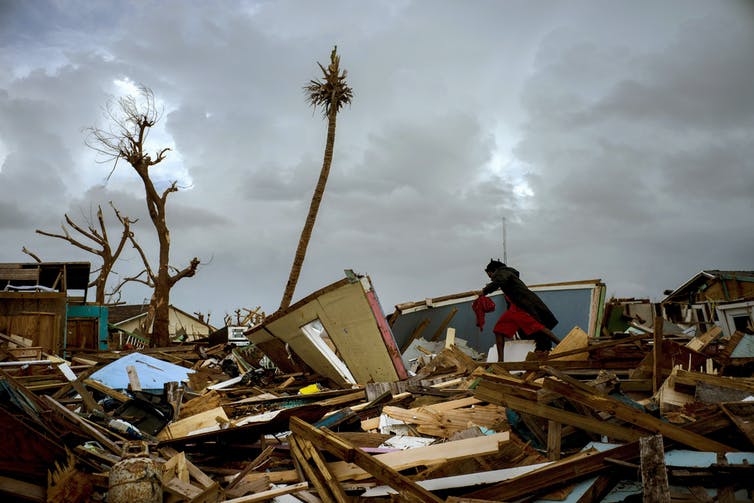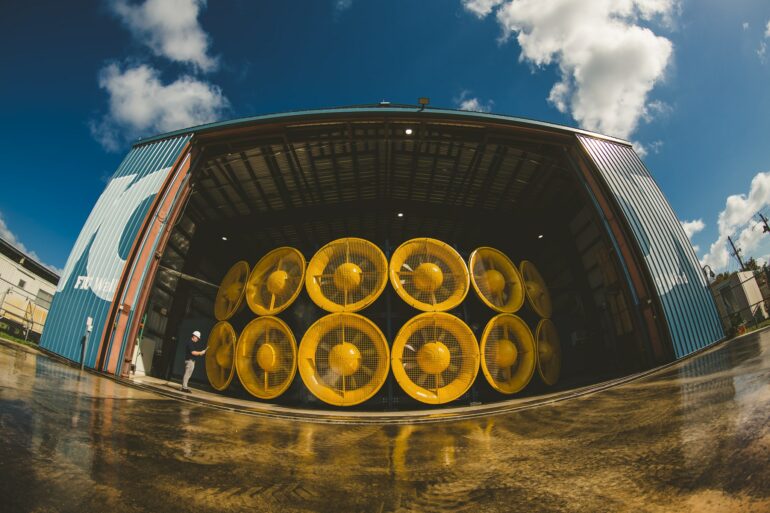In an airplane hangar in Miami, engineers are recreating some of the most powerful hurricane winds to ever strike land. These Category 5 winds can shatter a test building in the blink of an eye.
Yet they aren’t powerful enough to keep up with nature.
When engineers built the Wall of Wind test facility 10 years ago at Florida International University, it was inspired by Hurricane Andrew, a monster of a storm that devastated South Florida in 1992.
The facility was designed to test structures’ ability to withstand winds up to 160 miles per hour (257 kilometers per hour). Now, we’re seeing the likes of Hurricane Dorian, which shredded neighborhoods in the Bahamas with 184 mph (296 km/h) winds in 2019, and Hurricane Patricia, with winds clocked at 215 mph (346 km/h) off the coast of Mexico in 2015.

Hurricane Dorian’s Category 5 winds tore apart communities in the Bahamas.
AP Photo/Ramon Espinosa
Studies show tropical storms are ramping up in intensity as the climate changes and ocean and air temperatures rise. Designing homes and infrastructure to withstand future storms like Dorian will require new test facilities that go well beyond today’s capabilities – for what we believe should be called Category 6 storms.
The Wall of Wind
There is currently only one life-size test facility at a U.S. university capable of generating Category 5 winds, currently the most powerful level of hurricane. That’s the Wall of Wind.
At one end of the facility is a curved wall of 12 giant fans, each as tall as an average person. Working together, they can simulate a 160 mph hurricane. Water jets simulate wind-driven rain. At the other end, the building opens up to a large field where engineers can see how and where structures fail and the debris flies.
The powerful tempests that we create here allow us and other engineers to probe for weaknesses in construction and design, track failures cascading through a building and test innovative solutions in close to real-world storm conditions. Cameras and sensors capture every millisecond as buildings, roofing materials and other items come apart – or, just as important, don’t fail.
Ten years of research here have helped builders and designers reduce the risk of damage. That’s helpful when forecasters warn, as they do for 2022, of a busy hurricane season with several major hurricanes.
Lessons from hurricane testing
We’ve found in destructive testing that a structure will often rip apart in less than a second. All it takes is the wind penetrating the weakest point.
When Hurricane Dorian hit the Bahamas, many less-well-constructed homes turned into shrapnel, creating another problem. Once a building fails, even nearby homes built to withstand higher winds are in trouble because of the flying debris. Our testing has shown how debris from one building, under continuous…



